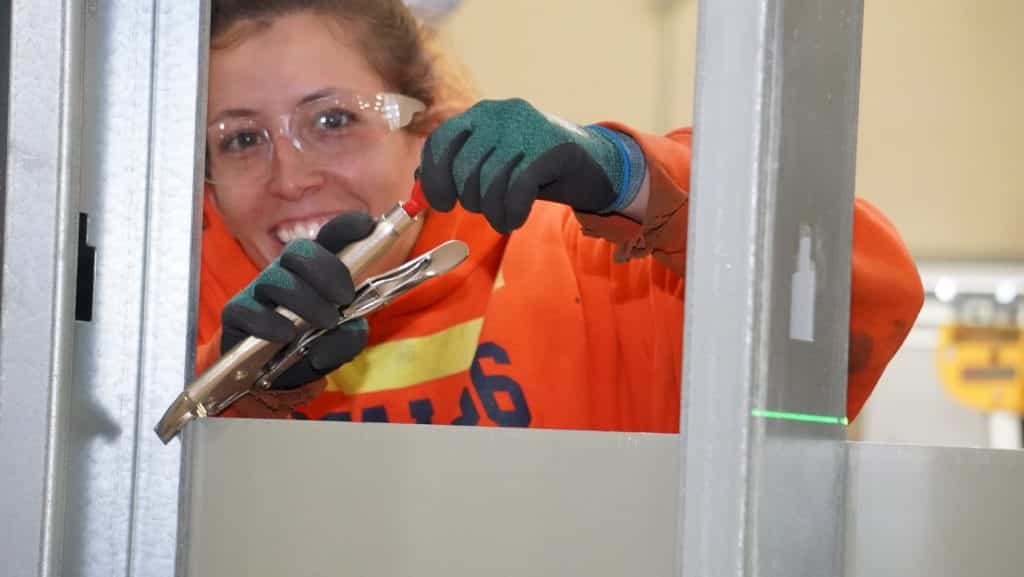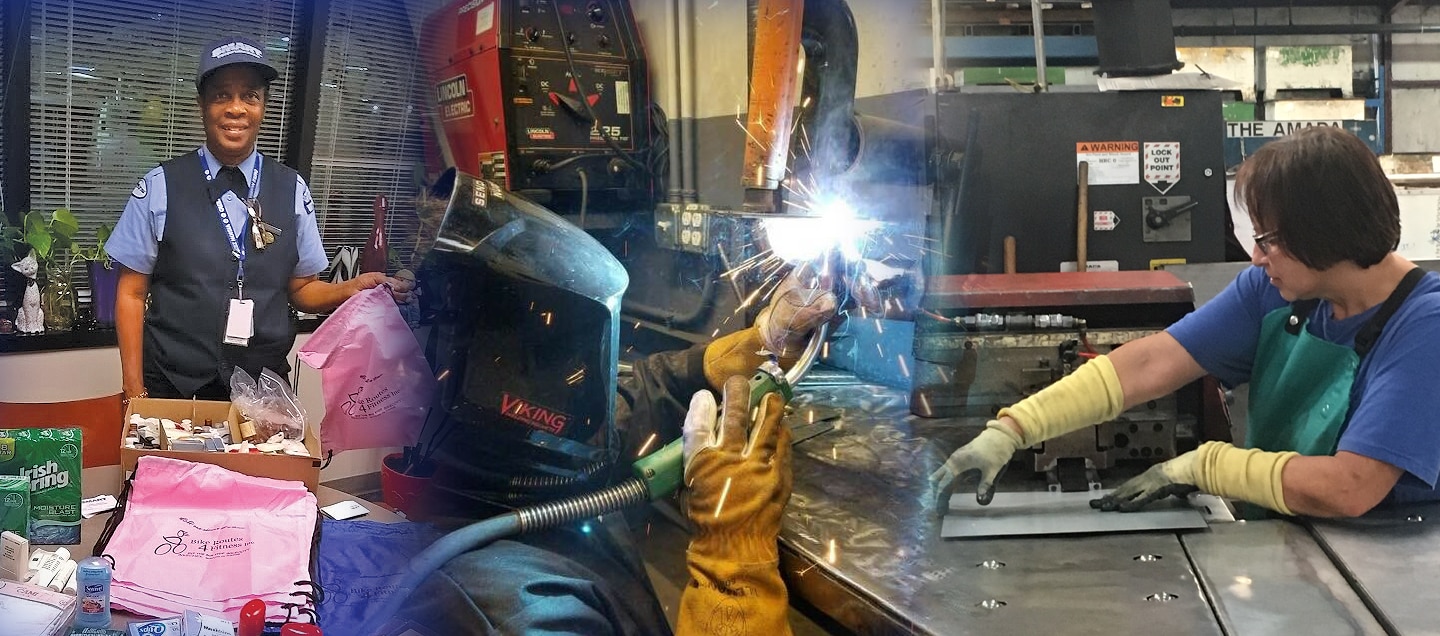What Is a Committee?
A body of persons delegated to consider, investigate, take action on or report on some matter.
Why Form a Women’s Committee?
People of organized union labor have made enormous progress in wages, working conditions, benefits, job security and human rights. If working women are to gain equality, they must work with and through their unions.
The women’s committee is a place for women to gain leadership skills; to raise issues and organize to make changes; and to connect with other SMART women and build support networks in the workplace. Local union women’s committees are a key element in the struggle for women’s equality in the workplace.
A women’s committee can provide a safe zone to identify and create a culture where union women can speak out about concerns and develop strategies to engage with and change the dominant culture.
Women need unions today more than ever — and unions need women more than ever as well. Unions are only as strong as the involvement and determination of their members. Local union women’s committees are a key part of building our union.
Approach the local leadership with a proposal identifying needs and opportunity within your local and your community.
You can start small: A good committee need not have lots of members, but rather ones that are committed to the idea. However, it is recommended that an odd number be selected to serve for no-tie votes.
Once your committee is established, you should meet regularly — at least as often as local union meetings are held.
Many local women’s committees have budgets; however, this must be determined once the committee goals and agenda are set. Active committees often conduct fundraisers to help implement programs.
Setting up a new women’s committee will involve:
- Talking to other women in your workplace and other workplaces in your local union.
- Setting a date for your first meeting and publicizing it.
- Setting some goals.
- Spreading the word. As your committee work gets going, invite others to join.
- Vision statement
- Mission statement
- Appoint a chairperson
- Create subcommittees and appoint a chair to each subcommittee
- Encourage women workers to speak out about sexual harassment on the job. Encourage women to speak up about any issues they are facing.
- Examine the health care benefits in your contract to see if they discriminate against women, and recommend to the local ways to equalize benefits in the next contract.
- Look for avenues for childcare and work-life balance support.
- Identify and inform your members of community resources for women.
- Move the union or organization to address certain issues such as childcare, maternal leave, sexual harassment and unequal access to promotions.
- Increase the number of women in leadership positions.
- Sponsor or encourage skills-training for women members, such as public speaking, running a meeting, running for office or union basics.
- Set up a mentoring program for potential new female leadership.
- Encourage more women to participate in union activities and seek out and support women to run for elected positions.
- Participate in all IA and national women’s and human rights campaigns.
- Provide support to existing leadership by offering information on equity issues and opportunities to learn and do more.
- Actively support the development of new leaders from equity-seeking groups. Women’s committees can be a great place for workers to build the confidence and skills necessary to become active in their local unions and communities, develop relationships with other activists, work with community groups and other union committees, and be part of making meaningful change.
- Work with other standing committees and equity caucuses to support one another’s issues.
- Work with local labor councils and women’s organizations to coordinate and support events and campaigns in your area. (Contact your local union leadership to find out who your labor council delegates are.)
- Ensure all members have access to at least some form of anti-harassment training. Work with the leadership and the JATC.
- Connect with community groups, and bring a trade union and working-class perspective on issues like poverty reduction, childcare, shelter services, etc.
- Be creative in working to ensure that the diversity of the membership is reflected in the overall composition of the leadership and membership of the union.
- Put an “equity lens” on all issues within the local union, and actively support changes to collective agreements, by-laws, local union practices and union “culture” that will lead to greater inclusion of all members.
- These goals can be reached through establishing regular monthly meetings.
- Sub-committees can be set up on issues such as education, bargaining, community involvement or women’s health.
- Establish a regular monthly meeting time and place. Send out notices at least one week before each meeting. Have a prepared agenda.
- Set up subcommittees to perform the work of the committee: training and education, bargaining issues, special programs, fundraising, and liaison with other women’s groups are only some examples.
- Educate committee members with the policies of within your local union that affect women.
- Invite union staff to meet with your committee. In this way, you can help ensure cooperation between the work of your committee and the other programs of the local union.
A union is only as strong as the workers who join and participate in it. The more that women take an active role in the union, the greater their influence in improving the status of women workers and the greater the strength of the union in bargaining for women’s rights
- Leadership Training
- Health & Welfare
- Pension
- Super Woman Mentality
- Current Legislative Issues
- Family/Work
- Networking/Mentoring
- Union Building
- Women in Politics
- Financial Issues
- Social Health Issues
- Community Service
- Domestic Violence
- Sexual Harassment
- Advancement through the Union
Every committee meeting should include something useful and educational for members – an interactive quiz, a quick report back from all of the committee members (and their workplaces), a short video, a short discussion about a newspaper article, a guest speaker, a book review, etc.
Here are some additional tips for making your meeting more successful:
Have a purpose. Ask yourselves, why are you meeting? What do you hope to accomplish? Are you meeting to plan an event, to learn, to reenergize and to deal with standard items, or just one of these things? Be aware that some members see the Committee’s work as about ‘getting things done’, and other members may see it as providing informal support for their issues – both of these perspectives are valid and they represent needs that should be met in a meeting.
Consider how often you need to meet. A good meeting gives people energy – a poorly planned, unfocused meeting sucks energy. Nobody likes to meet for the sake of meeting. Don’t meet if you don’t have a plan – and if you’re meeting to develop a plan, think carefully ahead of time about a good process for developing on and for reaching a consensus.
Plan ahead. Where will the meeting be held? If space needs to be booked be sure to do this in advance. Be strategic about the timing of your meetings (i.e. can you hold them to coincide with membership meetings so that you can bring you issues forward?). Do you want new people to attend your meetings? If yes, how will you get the word out? Studies show the majority of people get involved in social movements because someone asked them to (not because they saw a poster, or were even committed to the issues). Don’t assume people will show up if they’re interested – people need to be invited. Again. And again. As well as making personal contact, use your local union newsletter to invite people to join the Women’s Committee – by making it sound interesting and letting them know they’re needed. Consider what it would be like to be a new person at one of your meetings – how are new people welcomed? How are they brought into the discussions so they don’t feel left out? Distribute an agenda in advance so people can prepare. All committees will have a down fall and up flow of attendance at meetings. Attendance will be increased when people feel there is progress made on projects identified as important. Leaving the meeting with clear ideas of actions that have been agreed on and who has agreed to take these actions. Remember that tasks need to be spread out to develop skills and to ensure we don’t burn out.
Some locals have found alternating between meetings in-person and online or by conference call have been effective. Remember to keep the Women’s Committee updated on your projects & successes!
The SMART Women’s Committee has developed a “How-To” guide with information for SMART sisters seeking to form or expand women’s committees at their local. View the handbook here.

Become a SMART Member
Take the next step on your journey towards a rewarding career. Learn how you can become a SMART member.
Hotline
Are you experiencing issues at work? Your union has your back. Contact us via our SMART Hotline.

